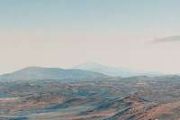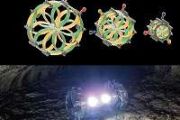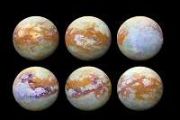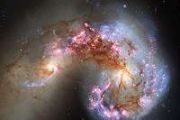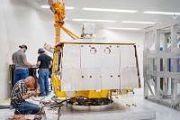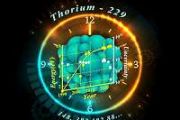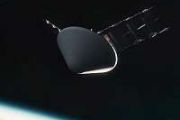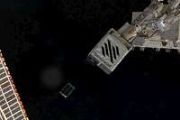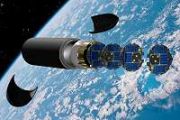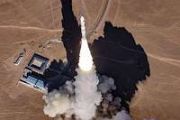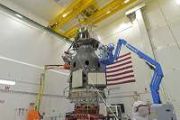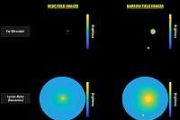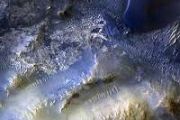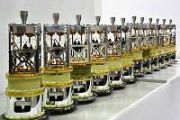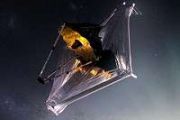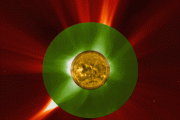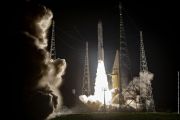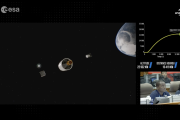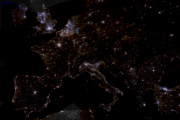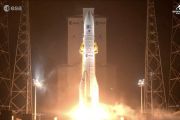
Copernical Team
Iran says rocket launch coming after photos show preparation
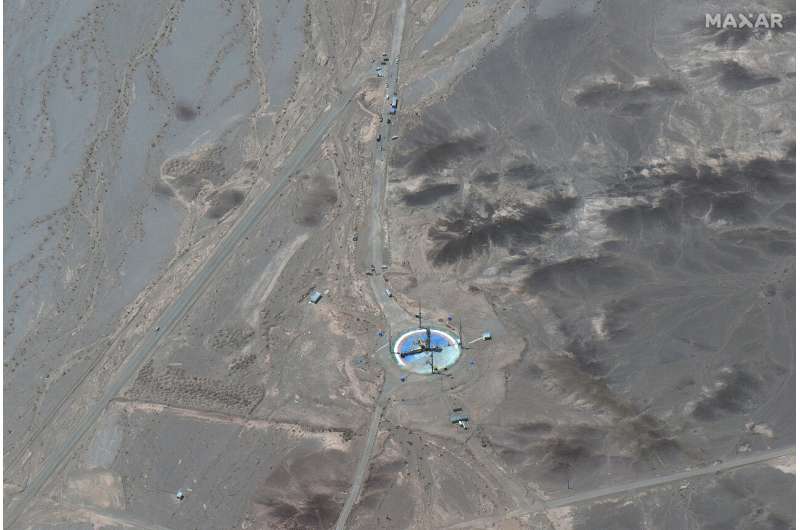
NASA, ESA discuss sending first European to moon

The European Space Agency and NASA on Wednesday talked up the prospect of putting the first European on the moon, as they signed a deal strengthening collaboration for future lunar exploration.
The space agencies had already agreed that three European astronauts would fly on the Orion spacecraft to NASA's Gateway, a space station that will orbit the moon as part of the Artemis program.
Now it seems one of those astronauts will go a step further.
"We look forward to having an ESA astronaut join us on the surface of the moon and continuing to build on our longstanding, critical partnership," NASA Administrator Bill Nelson said after attending an ESA council meeting in the Netherlands.
"NASA is counting on cooperation with ESA to propel exploration of the moon through the Artemis program," Nelson said in a statement, adding that "the European Service Module is the powerhouse of the Orion spacecraft".
The agencies also signed a deal on the Lunar Pathfinder, a planned communications satellite being built by British firm SSTL.
Elusive particle discovered in a material through tabletop experiment
 An interdisciplinary team led by Boston College physicists has discovered a new particle - or previously undetectable quantum excitation - known as the axial Higgs mode, a magnetic relative of the mass-defining Higgs Boson particle, the team reports in the online edition of the journal Nature.
The detection a decade ago of the long-sought Higgs Boson became central to the understanding of
An interdisciplinary team led by Boston College physicists has discovered a new particle - or previously undetectable quantum excitation - known as the axial Higgs mode, a magnetic relative of the mass-defining Higgs Boson particle, the team reports in the online edition of the journal Nature.
The detection a decade ago of the long-sought Higgs Boson became central to the understanding of Emulator reveals the intricacies of light behavior in complex evolving systems
 University of Central Florida researchers are part of a team who have revealed, for the first time, the intricacies of how light behaves in advanced dynamical optical systems with configurations known as non-Hermitian arrangements.
In non-Hermitian systems, allowed energy values create self-intersecting surfaces with a unique topology and branch points, which are known as exceptional point
University of Central Florida researchers are part of a team who have revealed, for the first time, the intricacies of how light behaves in advanced dynamical optical systems with configurations known as non-Hermitian arrangements.
In non-Hermitian systems, allowed energy values create self-intersecting surfaces with a unique topology and branch points, which are known as exceptional point You can hear every event twice in a three-dimensional quantum gas
 If you could immerse yourself in a quantum fluid, you would hear every event twice, because they support two sound waves with different speeds.
The researchers in their experiment have realized this remarkable property for the first time in a three-dimensional quantum gas, instead of a quantum liquid. They achieved this result through cooling a gas of potassium atoms trapped by laser beams
If you could immerse yourself in a quantum fluid, you would hear every event twice, because they support two sound waves with different speeds.
The researchers in their experiment have realized this remarkable property for the first time in a three-dimensional quantum gas, instead of a quantum liquid. They achieved this result through cooling a gas of potassium atoms trapped by laser beams Study reveals how some high-energy particle 'jets' lose energy
 Scientists studying particle collisions at the Relativistic Heavy Ion Collider (RHIC) have revealed how certain particle-jets lose energy as they traverse the unique form of nuclear matter created in these collisions. The results, published in Physical Review C, should help them learn about key "transport properties" of this hot particle soup, known as a quark-gluon plasma (QGP).
"By looki
Scientists studying particle collisions at the Relativistic Heavy Ion Collider (RHIC) have revealed how certain particle-jets lose energy as they traverse the unique form of nuclear matter created in these collisions. The results, published in Physical Review C, should help them learn about key "transport properties" of this hot particle soup, known as a quark-gluon plasma (QGP).
"By looki Airbus brings leading-edge digital capabilities to Multi-Domain Military Operations
 In today's world of rapidly evolving global security challenges, the ability to collect, analyse and utilise data for decision-making and response is more important than ever.
By applying its leading-edge digital capabilities to Multi-Domain Military Operations, Airbus provides seamless integration solutions that connect mission-critical military platforms and systems worldwide across all
In today's world of rapidly evolving global security challenges, the ability to collect, analyse and utilise data for decision-making and response is more important than ever.
By applying its leading-edge digital capabilities to Multi-Domain Military Operations, Airbus provides seamless integration solutions that connect mission-critical military platforms and systems worldwide across all Amsterdam physicists build an atom laser that can stay on forever
 Imagining our everyday life without lasers is difficult. We use lasers in printers, CD players, pointers, measuring devices, and so on. What makes lasers so special is that they use coherent waves of light: all the light inside a laser vibrates completely in sync.
Meanwhile, quantum mechanics tells us that particles like atoms should also be thought of as waves. As a result, we can build '
Imagining our everyday life without lasers is difficult. We use lasers in printers, CD players, pointers, measuring devices, and so on. What makes lasers so special is that they use coherent waves of light: all the light inside a laser vibrates completely in sync.
Meanwhile, quantum mechanics tells us that particles like atoms should also be thought of as waves. As a result, we can build ' Air-breathing hypersonic weapon delivers value and performance
 Two core technologies are at the heart of the U.S. pursuit of hypersonic weapons, or those that travel Mach 5 or faster: scramjets, which derive propulsion from the air around them, and boost-glide systems, which use a rocket motor to reach the edge of space and then descend to their target.
Raytheon Missiles and Defense, a Raytheon Technologies business, is making significant investments
Two core technologies are at the heart of the U.S. pursuit of hypersonic weapons, or those that travel Mach 5 or faster: scramjets, which derive propulsion from the air around them, and boost-glide systems, which use a rocket motor to reach the edge of space and then descend to their target.
Raytheon Missiles and Defense, a Raytheon Technologies business, is making significant investments FAA requires SpaceX to make environmental changes to Starbase in Texas
 The Federal Aviation Administration on Monday said SpaceX will be required to make more than 75 changes to the orbital launch program at its Starbase launch site in Texas after determining there would be some environmental impacts to the surrounding area.
Elon Musk's SpaceX must obtain either an experimental permit or a vehicle operator license from the FAA for Starship and Super Heavy
The Federal Aviation Administration on Monday said SpaceX will be required to make more than 75 changes to the orbital launch program at its Starbase launch site in Texas after determining there would be some environmental impacts to the surrounding area.
Elon Musk's SpaceX must obtain either an experimental permit or a vehicle operator license from the FAA for Starship and Super Heavy 
